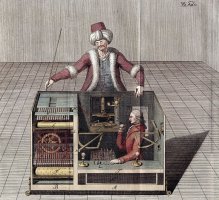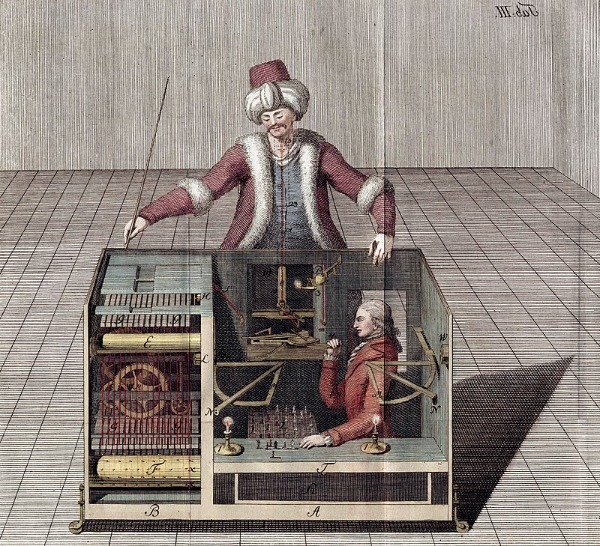
The Turk: The Greatest Chess Hoax of the Enlightenment
15.02.2024 06:00 | NewsThe Turk was a mechanical machine operated in the 18th and 19th centuries, which its owners claimed to be a chess-playing automaton, but in reality, it was a highly elaborate hoax.
In the annals of invention and intrigue, few tales are as captivating as that of The Turk, a mechanical enigma that challenged the intellectual elite of the 18th and 19th centuries. Its creators heralded it as a revolutionary chess-playing automaton, a marvel of mechanics capable of defeating human opponents in a game dominated by strategic genius. Yet, behind its wooden facade and moving pieces, The Turk harbored a secret so cunning, it would remain one of the greatest hoaxes ever conceived. The architect of this grand illusion was Wolfgang von Kempelen, a name synonymous with ingenuity and deceit, whose creation would blur the lines between reality and illusion.
Born into privilege, Kempelen's life was a testament to the power of education and opportunity. His lineage afforded him an entree into the imperial court, where he rubbed shoulders with nobility and secured his place as a man of importance. Maria Theresa herself recognized his talents, entrusting him with the modernization of Hungary's salt mines—a task he accomplished with the same zeal he applied to his true passion: invention.
Kempelen's mind was a crucible for innovation, giving birth to devices that ranged from practical to profound. Among his creations was a manual printing press for the blind, a testament to his commitment to improving lives through technology. But it was his fascination with the human voice that led him down a path of mechanical mimicry, a journey that would culminate in the creation of The Turk.
The Turk was more than a machine; it was a challenge to the status quo, a question posed to the limits of human creativity. Kempelen, with the audacity of a charlatan and the brilliance of a true genius, dared to present his invention to the empress, offering her a glimpse into an age where machines could think, or so it seemed. This act of boldness was not just a display of technological prowess but a performance that flirted with the divine, offering immortality through legacy.
Yet, beneath its mechanical heartbeat, The Turk was an elaborate ruse, a physical manifestation of Kempelen's belief that perception could be manipulated, that wonder could be manufactured. In presenting a machine that could seemingly outwit humans at a game as cerebral as chess, Kempelen challenged his contemporaries to question the boundaries between man and machine, intellect and artifice.

In the end, The Turk would become a legend, not for its ability to play chess, but for the questions it raised about the nature of invention and deception. Kempelen, in his creation, had not just built a machine; he had engineered an era of curiosity, a period of profound questioning that would pave the way for the technological marvels of the future. Perhaps Kempelen was more than just an inventor; he was a visionary, a man who saw beyond the constraints of his time and dared to dream of a world where the impossible could be made real.
As history unfolded, The Turk's secret would eventually be revealed, unmasking the illusion that had captivated the imagination of many. Yet, the legacy of Kempelen and his mechanical chess player endures, a reminder of the thin line between genius and folly, and the eternal human quest to transcend the ordinary, to reach for the extraordinary, even if through the guise of illusion.
